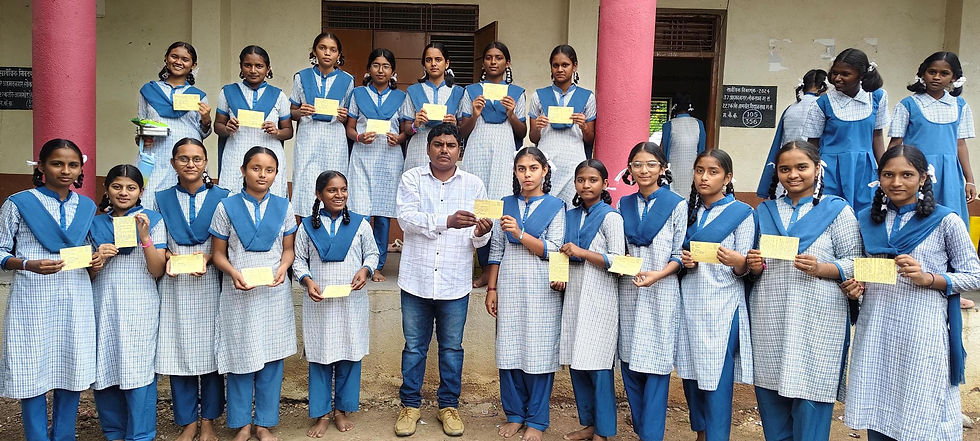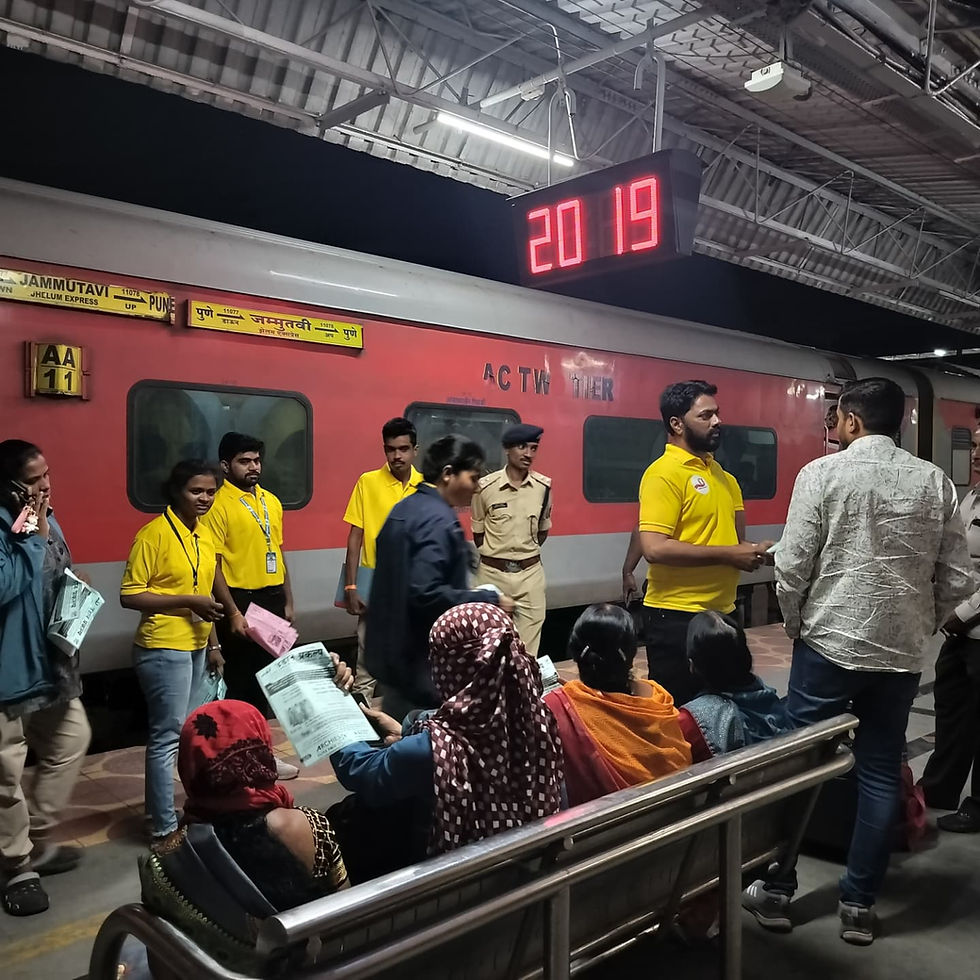Bangbandhu’s Bangladesh
- Snehalaya

- Oct 24, 2021
- 7 min read
After waving our Sadbhavana Cycle Yatra off from Ahmednagar Fort, our Founder and force behind the cycle ride, Dr Girish Kulkarni, and local historian and Project Coordinator of our Radio Nagar, Bushan Deshmukh, visited Bangladesh to continue making arrangements for the cycle at its final destination. Here Bushan shares their first experience and impressions of our northern neighbour...

Prior to the cycle rally, for me, Bangladesh meant Dhaka and Dhaka meant Mulmul production and my classmate in Solapur, Ravi Deshmukh. Ravi and I studied textile manufacturing together and although Ravi is now settled in Canada, he exports clothes from Bangladesh to destinations across the world and is a frequent visitor to Dhaka. When he heard of our planned rally he immediately promised to help us and was there to welcome us when Girish and I landed at Hazrat Shahjalal International Airport on 4 October 2021.
All our preconceptions of Bangladesh suffering from poverty was dispelled as passed by lush green fields, high-rise buildings and grand commercial complexes on beautiful roads. We stayed at Ravi’s flat at Retired Army Officers’ Colony in Baridhara area, an area that reminded us of the more luxurious parts of Mumbai or Pune. Like in Indian cities, terraces have been transformed into gardens, abundant with mango, coconut, banana, guava and neem trees.
Situated on the banks of Buriganga, Turag, Dhokeshwari and Sheetlakshya rivers and with many small and large lakes, Dhaka has old and new parts. Old Dhaka has hundreds of historical buildings, including Lalbagh Fort, Ahsaan Manjil and the famous 12th century Dhakeshwari Temple. The roads are narrow and, flooded with thousands of cycle rickshaws, major traffic jams can turn a short trip into an hour or two affair...
In 1608, during the Mughal era, Dhaka became the capital of Bengal, renamed as ‘Jahangirabad’ or ‘Jahangirnagar’. Many transitions followed and the importance of Dhaka diminished when the British made Calcutta their headquarters. After independence from Pakistan in 1971, a new era of development began. With huge human capital and the lowest wages in the world, many industries started in Bangladesh and it became the world leader in textile manufacturing. Readymade garments continue to be exported to many countries spanning Europe, Africa and the Americas. In the last few years Bangladesh’s GDP has been growing, reflected in the construction of many flyovers and a Metro which will start soon. Five star hotels are adding to the splendour of the city.
Our first day at Dhaka was spent with Ravi and his colleague Shahima Akhtar on the phone, arranging appointments with people and organisations that could help us. We also visited the market, purchasing an English language map of Dhaka and books on Bangladesh and the 1971 liberation war. There are hundreds of bookshops with books mainly in Bengali. Luckily, we found The Blood Telegram by Gary Bass and 1971 by Shrinath Raghvan. which helped us prepare a Snehalaya cycle rally brochure in perfect Bengali.
Next morning, Shahima took us to see the headquarters of various government departments, the Navy, Army and Air Force, cricket stadium and the Olympic Bhavan. Large hoardings with photos of Prime Minister Sheikh Hasina and her late father – the Father of Bangladesh, Bangbandhu Sheikh Mujibur Rehman were everywhere. Shahima also showed us the Prime minister’s residence, hostel for MPs, and the Parliament of Bangladesh, a magnificent building in the center of the sprawling park which has become a symbol of Bangladeshi identity.
We also visited the bungalow where the architect of the Liberation of Bangladesh and former prime minister, Sheikh Mujib and his family were brutally assassinated. Now a memorial to Bangabandhu, there is a museum with the belongings of the Mujib family, including their furniture, preserved there. Marks of the bullets fired by attackers and bloodstains can be seen everywhere. We were lucky to be given a tour by the scholar Mohammad Nasrul Islam Khan, the curator of the museum. Before we left, we paid homage and placed the Cycle rally brochure near a memorial to Bangabandhu and sought his blessings.
Next, we met veteran social worker Kushi Kabir, a social thinker and art lover, at her residence
in Dhanmondi area. She could only spare 10 minutes, but before we knew it half an hour had passed in intense discussion. She painted us a colourful picture of the cultural, social and political aspects of Bangladesh through her discussion and suggested important people who could help us.
Sam Shaukat, former Governor of Rotary Club is one of the most influential people in Dhaka. Introduced by the Rotary Club in Ahmednagar and Om Motipavale, Governor of the Rotary RID No 3132, had connected us and he was kind enough to invite us for dinner and we met at his residence with his wife, Nasreen Aara, who was the secretary to the Government of Bangladesh. After calling some ministers to set up appointments for the next day we joined two of his friends at ‘Star Biryani’, the famous hotel in Dhaka. Sam told us how he never lets guests go without having ‘Kachchi Biryani’. It is delicious and I believe tastier than biryani in Hyderabad and Delhi with so many guests returning to Dhaka again just to taste it again. I sent it as a parcel to many friends in India.
On 6 October, we went with Sam to meet the Minister of Bangladesh Liberation War Department. He welcomed the Sadbhavana Cycle Yatra saying, “It is the right time to revive history”. Our next meeting was with the Bangladesh Foreign Minister, A. K. Abdul. He had recently visited Naokhali’s Gandhi Ashram for Gandhi Jayanti on 2 October, the day our cycle ride departed and had travelled for 18 hours from America to express gratitude for Mahatma Gandhi and India's contribution in the Liberation War, and welcomed a new chapter of friendship between India and Bangladesh through our cycle rally. He said that Bangladesh’s umbilical cord is attached to India and offered to help with obtaining visas. He also told how he had met the grandson of Bipinchandra Pal while in America, inviting him to visit his homeland. (Bipinda means Pal among the trio Lal-Bal-Pal, who protested against the Bengal partition by Lord Curzon in 1905.)
Our cycle yatra would not be possible without the support of the Rotary Club and we met the Rotary Governor (RID 3281) Barrister Mutasim Billah Farooqee. He said that this rally is very helpful for good relations between the two countries. We were overwhelmed by the hospitality of Bangladesh Ministers, Officers and Rotary officials and were happy to finally meet with people we had been communicating with over the phone for the previous three months. One of these was Rahnab Kumar, director of Gandhi Ashram Trust in Noakhali, where the cycle yatra will end, and his wife Tandra, a social activist for women's rights, who we met with for a meal in Dhaka.
We also visited the Indira Gandhi Cultural Center, the former Indian Embassy, which is now a rich library with around 28,000 books with separate sections for music and yoga. The center organizes many cultural events, however, due to the pandemic activities had been stopped for the last one and a half years and as we were among the first few visitors all the officers warmly welcomed us and shared lots of information.
Aroma Dutta, MP from Comilla, Bangladesh, is a leader known for fighting for women and
minorities rights. Her grandfather visited Noakhali with Mahatma Gandhi in December 1946 when violence due to Partition was rampant. When returning to Delhi after four months,
Mahatma asked Arome’s grandfather to stay to preserve his legacy. Girish explained the purpose of the cycle yatra which she welcomed but advised us, considering the current situation, to contact security departments along the path of cycle yatra.
While returning from a visit to Dhaka University, we noticed a gurdwara in the Nilkhet
district. The huge iron door was closed but still we stopped to look inside through the gates. Fortunately, Granthi Virdas was there and invited us into the gurdwara to pray. Shri Guru Nanak, himself established this Gurudwara. When we enquired about the feasibility of the cycle yatra staying at the gurudwara, Granthi Virdas responded positively assuring us that although the population of the Shikh community is very small, they will help as much as possible. With two big halls and a langar where we can cook, we could not hope for such a quiet, sacred and central place to stay in Dhaka.
While dashing around Dhaka, we saw the National Art Gallery flanked with photos of India and Bangladesh's fathers of their nations, Gandhi and Sheikh Mujib. Out of curiosity, we decided to visit and were rewarded with a beautiful exhibition on the lives of Bapu and Bangbandhu. With a great combination of music and light, this exhibition was carefully unfolding history, including shattering photographs of the civilian massacre carried out by the Pakistani forces in 1971. There we met retired Lieutenant Colonel Kazi Sajjad Ali, who was decorated with Birpratik Swadhinta Padak (similar to Paramvir Chakra in India) in 1971. The active 80-year-old was explaining Mahatma Gandhi to students in Bengali and English and promised to participate in cycle yatra once it enters Bangladesh. We finished our visit with another painting exhibition featuring poems and paintings dedicated to Prime Minister, Sheikh Haseena and Bangbandhu.
We also visited Dhakeshwari temple and Shri Shri Madhava Goudiya Math and the supreme court where Girish took a turn in riding a cycle rickshaw. Although our visit to Dhaka was jam-packed and we did not have as much time as we wished to find out more about Bangladeshi newspapers, television, community radio, theater, dance, cinema, journalists, artists or meet with the relevant people. Fortunately, during our visit to the Dhakeshwari temple, Navratri festival preparations were going on and there were a few television people there. Taking advantage of the situation, we introduced ourselves and a news bite for Bangladesh channels was filmed.
We were also lucky that the Editor of the Daily Observer, Bangladesh’s most popular daily newspaper, Sam Shoukat Husain is a Rotarian. He introduced us to the Bangladesh National Press Club and Ms Farida Yasmin, the first female President, who welcomed our initiative. The same day, a Press Club meeting was paying homage to journalists who lost their lives due to corona and journalists from Gazi TV interviewed Girish and Sam Shaukat Husain for the national TV channel. Our day was rounded off with an evening singing songs with Habib Ali Naseem, office bearer of the Artists Association for TV and cinema artists.
With the love and goodwill of friends in Bangladesh, we said goodbye to Ravi and departed from
Dhaka to make further arrangements for the cycle yatra back in India. Now, Dhaka is no longer a foreign city to us ...



